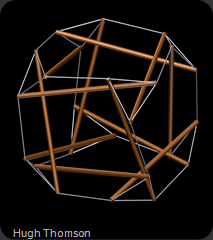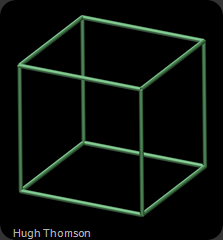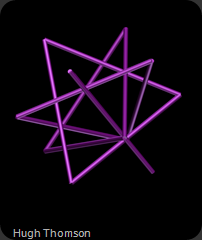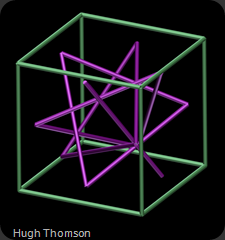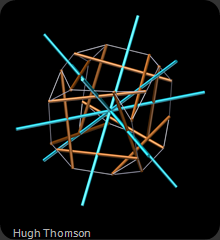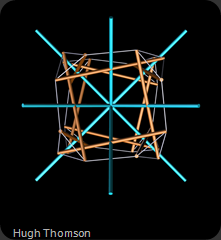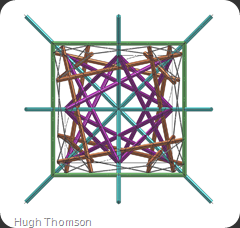Considering my current research, it was inevitable that I would have to revisit my earlier theories on the construction of the tensegrity T-Prism and have a look at this structure for rotational symmetry.
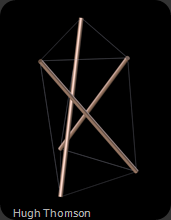
http://spatialgeometrix.blogspot.com/2010/09/placeholder-geometry.html
My earlier thoughts on the development of this type of tensegrity still hold true, but building a model based on rotational symmetry has greater appeal and simplicity.
If we consider again the parameters of transition of the morphing from one state to another we will see that the green triangle form transitions to a single linear form as shown on the left image.
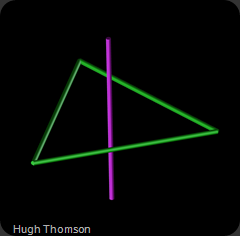
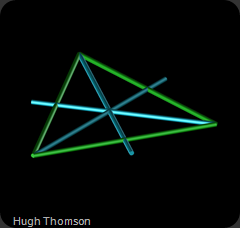
The right image (above) shows the relationship of the green triangular form to the blue struts representing the axis of symmetry. These lines intersect on the midpoints of the green struts.
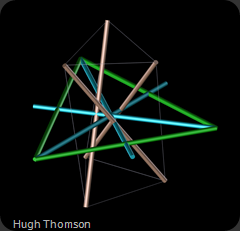
Now we introduce the T-Prism or 3-Prism structure to this assembly and align it accordingly.
The brown struts are located at the midpoint with the blue axis struts resulting in a balanced arrangement.
To create a tapered T-prism move the intersection point of the brown struts towards one end. In each case the brown struts remain perpendicular to the axis of the blue struts.
The last image shows the parallel relationship of all three planes, assuming a plane connecting the triangular arrangement at the top and bottom of the T-prism.
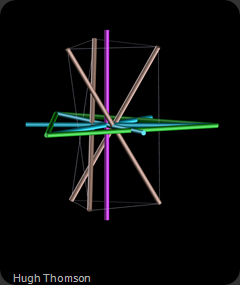
The concept of rotational symmetry as discussed in the recent posts here is something I am quite excited about.
I would be interested to receive comments on my ideas and hopefully enter into some discussion with others about tensegrity and rotational symmetry.
So please drop me a line at hught2008@gmail.com
 Tensegrity 3v Pars Tetra RS
Tensegrity 3v Pars Tetra RS Tensegrity Cube RS
Tensegrity Cube RS Tensegrity Tetrahedron RS
Tensegrity Tetrahedron RS Tensegrity T-Prism RS
Tensegrity T-Prism RS Tensegrity Octahedron RS
Tensegrity Octahedron RS




